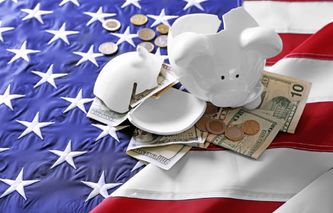Millions of Americans have bad credit, creating a constant demand for credit repair services. In this overview of the latest credit repair statistics, we’ll discuss the industry itself, including its value, employment rates, and wages. We’ll also examine when and how people reach out to credit repair companies and how effective their services are. Finally, we’ll talk about the illegal side of things and find out why some experts don’t look favorably on credit repair services.
Top 10 Credit Repair Statistics and Facts for 2025
The global credit repair industry was worth $6.6 billion in 2021.
The US credit repair market was worth $4.02 billion in 2021.
In 2021, the United States had 44,730 credit repair companies.
The US credit repair industry had 50,935 employees in 2021.
44.6% of people who seek credit repair services have a score of 300–579.
88% of users who paid for credit repair services said they were effective.
56.2% of credit repair users had negative items removed from their reports.
31% of people use credit repair services for 3–5 months.
Most users pay $250–$500 for credit repair services.
In 2021, the FTC received 3,151 reports of credit repair fraud.
Credit Repair Industry Statistics
The global credit repair industry was worth $6.6 billion in 2021.
Over the next six years, the industry will keep growing at a relatively slow pace. By 2027, its value is expected to exceed $7.4 billion, for a compound annual growth rate of 1.91%. Based on their size, business strategy, financial viability, and opportunities for growth in the coming years, researchers cite CreditRepair.com, Lexington Law, Sky Blue Credit Repair, Penguyan Credit Service, Ovation, MyCreditGroup, and Credit Saint as the world’s top credit repair companies.
(MarketWatch)
The US credit repair market was worth $4.02 billion in 2021.
Accounting for nearly 61% of the global value in 2021, the US is the single largest market for credit repair services. According to projections, the US credit repair market was set to reach $4.4 billion in 2022, marking a 9.5% year-over-year increase. But if we look closely at the data from five years ago, we can see that the market was worth nearly $5.2 billion in 2017. So, between 2017 and 2022, the US credit repair industry experienced negative growth of -3.2% per year.
(IBISWorld)
In 2021, the United States had 44,730 credit repair companies.
The number of companies in 2022 was projected at 43,791 — a loss of nearly 1,000 companies and a 2.1% year-over-year decrease. While many companies have had to close their doors for good, some were bought and merged with their larger competitors. This downsizing trend has been going on for years now. In 2017, the US had more than 60,000 credit repair companies. This means the number of businesses has diminished by 6.7% annually from 2017 to 2022.
(IBISWorld)
The US credit repair industry had 50,935 employees in 2021.
Credit repair business statistics suggest that most such companies are small-scale operations with 1–2 employees on average. In 2022, industry employment was projected at 52,871, marking a 3.8% year-over-year increase. However, like the industry’s value, the employment rate has also gone down in the last five years. Between 2017 — when it had close to 69,000 employees — and 2022, employment in the US credit repair industry has decreased by 4.8% each year.
(IBISWorld)
The US credit repair industry’s wages in 2021 totaled $1.52 billion.
The industry employed 50,395 people in 2021, meaning that the average credit repair business salary stood at $30,162 per year. This is well below the national median annual wage, which was $54,132 as of Q2 of 2022. Researchers projected the total wages would reach $1.6 billion in 2022, marking a year-over-year increase of 4.9%. Despite that, the industry wages are still following a downward trajectory — from 2017 to 2022, they have decreased by 4.5% annually.
(IBISWorld, The Balance)
Statistics on the Need for Credit Repair
16% of Americans have a bad credit score.
The FICO credit score scale — which more than 90% of US lenders use — organizes scores into five groups. While everything above 800 is deemed excellent, 740–799 is very good, 670–739 is good, 580–669 is fair, and 300–579 is poor. According to credit score statistics, around 16% of Americans have a poor credit score. With the US population currently estimated at 333.3 million, there are more than 53.3 million Americans in need of credit improvement.
(Experian, US Census Bureau)
42% of US consumers believe credit repair companies are helpful.
In a 2020 survey, more than two-fifths of Americans said credit repair companies are helpful in correcting credit report errors that could lower their scores. And while the expert consultants on the survey agreed with this claim, they noted that many credit repair businesses charge high fees for things consumers can do on their own at no cost. This suggests that convenience is the top reason people opt for credit repair services rather than fixing irregularities by themselves.
(Consumer Federation of America)
44.6% of people who seek credit repair services have a score of 300–579.
Based on the FICO classification, these people have a poor credit score. At the same time, the second largest share of consumers (33.4%) turn to credit repair services when their score is in the 580–669 range, which is deemed fair. Research shows that those who start with the lowest FICO scores end up with the highest gains from hiring credit repair companies. In fact, 49.3% of those who started with poor credit say these services added 100 or more points to their scores.
(FinMasters)
45.4% of credit repair users found their chosen company online.
Once they decide to pay for credit repair services, statistics reveal that the majority of people will look for the best option online. Another 37.2% of users have found their chosen company via a referral from a friend or a family member, while 13.4% saw an ad for the company and then called it. Interestingly, 2.8% of users say they didn’t actively seek these companies out themselves; instead, they were solicited by the company representatives via a phone call.
(FinMasters)
Statistics on Credit Repair Effectiveness
88% of users who paid for credit repair services said they were effective.
Despite personal finance experts’ misgivings about the effectiveness and usefulness of credit repair services, a 2019 survey of 500 users revealed that 88% saw significant increases in their credit scores. At the same time, only 12% reported negligible credit score increases of under 25 points. Besides being happy with the services provided, 55.2% of participants said their chosen company treated them professionally and charged the exact price they initially agreed upon.
(PR Newswire)
Most credit repair service users add more than 100 points to their scores.
Statistics on credit repair show that 36.7% of those who used these services for up to five months and 48% of those who used them for six months or more added more than 100 points to their credit scores. In the former group, 16.3% added 75–99 points, 17.4% added 50–74, 16% added 25–49, and 13.6% added under 25 points. As for the latter group, 18.5% added 75–99 points, 15.1% added 50–74, 8.7% added 25–49, and just 9.7% saw gains in the 0–24 range.
(FinMasters)
56.2% of credit repair users had negative items removed from their reports.
Credit repair facts point to the removal of negative items — i.e., late payments, charge-offs, and collections — as the top service received by users. Other popular services are in the personal finance domain, including credit consulting (49%), setting up loan repayment plans (48%), and debt consolidation (46.6%). And while more than a quarter of users say credit repair companies sent letters to creditors and credit bureaus, 21% also received help with identity theft recovery.
(FinMasters)
Collections are the most commonly removed items from credit reports.
A 2022 survey found that 55.2% of users had credit repair companies successfully remove collections from their credit reports. Other information credit repair companies successfully removed included late payments (53.6%), medical bills (43.8%), charge-offs (30.6%), inquiries (25.8%), judgments (20.8%), and student loans (17.8%). At the same time, 11.2% of users had their bankruptcy records wiped, which helped 53.5% of them add 100+ points to their scores.
(FinMasters)
31% of people use credit repair services for 3–5 months.
While there’s no rule on how long one might need to use these services, credit repair statistics show that most users need 3–5 months to achieve the desired results. Of course, people with more extensive credit report issues will need extra time to fix them. As such, 23% say they used the services for 6–9 months, while 18% needed 10 months or more to add points to their scores. On the other hand, 22% of users only had minor issues that were resolved in just 1–2 months.
(FinMasters)
Most users pay $250–$500 for credit repair services.
According to FinMaster’s 2022 survey of 500 users, 31% said their total cost of credit repair services was in the $250–$500 range. Another 19% spent between $501 and $750, 16% paid between $751 and $1,000, and 16% spent upwards of $1,000. At the same time, 17% of users said their total spending was below $250. The cost grew with the amount of time spent using the services, so 38.3% of those who stuck around for six months or more spent more than $750.
(FinMasters)
67% of credit repair users rate their experience as good or excellent.
As for the clients’ impressions of credit repair services, statistics show they’re mostly positive. Overall, 87% of users described their chosen company’s treatment of clients as “professional” or “fair.” However, not all clients were satisfied. While 12% said their chosen company’s practices were “shady” or “borderline illegal,” 25.8% believed they were kept as clients longer than necessary, and 18.6% said the company purposefully made it difficult to cancel their services.
(FinMasters)
Illegal Credit Repair Companies Statistics
In 2021, the FTC received 3,151 reports of credit repair fraud.
While this number accounted for only 0.05% of all reports the Federal Trade Commission (FTC) received in 2021, it is by no means insignificant. On the more positive side, the number of credit repair fraud reports was down by 8.2% from the 3,432 received in 2020. Moreover, the FTC saw 4,097 such reports in 2019, meaning their number decreased by 23.1% over just two years.
(Federal Trade Commission)
Over 95% of ID theft claims banks receive from credit repair services are fraudulent.
In what is referred to as “credit washing,” credit repair services file bogus claims of identity theft with creditors to get problematic items removed from their clients’ credit reports. Credit repair industry statistics reveal this illegal practice has become more common since 2017, when the FTC stopped requiring a police report for consumers to file an identity theft claim. In 2020 alone, the FTC saw a 58.79% year-over-year increase in the number of identity theft reports relating to credit disputes — and many financial analysts attribute this massive growth to “credit washing.”
(American Banker, Point Predictive)
In March 2022, a Texas federal court shut down a “credit washing” business that charged exorbitant upright fees.
The company, which operated under the name Alex Miller Credit Repair, lured in clients seeking credit improvement by promising to remove all negative items from their credit reports for a $1,500 upfront fee — which is illegal. Furthermore, while the clients were told the company would achieve this by using “advanced disputing” techniques, unbeknownst to them, it had instead engaged in “credit washing” and filed numerous false identity theft reports to the FTC.
(Federal Trade Commission)
In May 2022, the FTC sued a credit repair business operating as a pyramid scheme.
According to the official information, the credit repair business known as Financial Education Services (FES) promised to remove all negative items from the clients’ credit reports, while also allowing them to make money by selling credit repair services to others. The company would charge an upfront fee of $99, with an additional recurring monthly fee set at $89. Before a Michigan federal court froze the company’s assets, it had defrauded clients out of $213 million.
(Federal Trade Commission)
Credit Repair Facts: The Takeaway
Although many personal finance experts question the idea of providing credit repair services in exchange for money, the industry is still on the rise. In 2021, it was worth $6.6 billion globally, with the US accounting for the largest chunk of that at $4.02 billion (61%). The global industry worth is projected to reach $7.4 billion by 2027, increasing at an annual growth rate of 1.91%.
Credit repair statistics also indicate most people find these services effective, describing their experiences with credit repair companies as good or excellent. Still, it’s important to note that around 12% of credit repair users aren’t happy with their experiences, and many more have certain misgivings. Additionally, there’s the issue of “credit washing” and businesses engaging in other illegal and deceptive activities, all of which gives the whole industry a bad name.
Credit Repair FAQ
How much is the credit repair industry worth?
How many credit repair companies are there?
How much does credit repair cost?
How long does credit repair take?
Sources:


.jpg)


